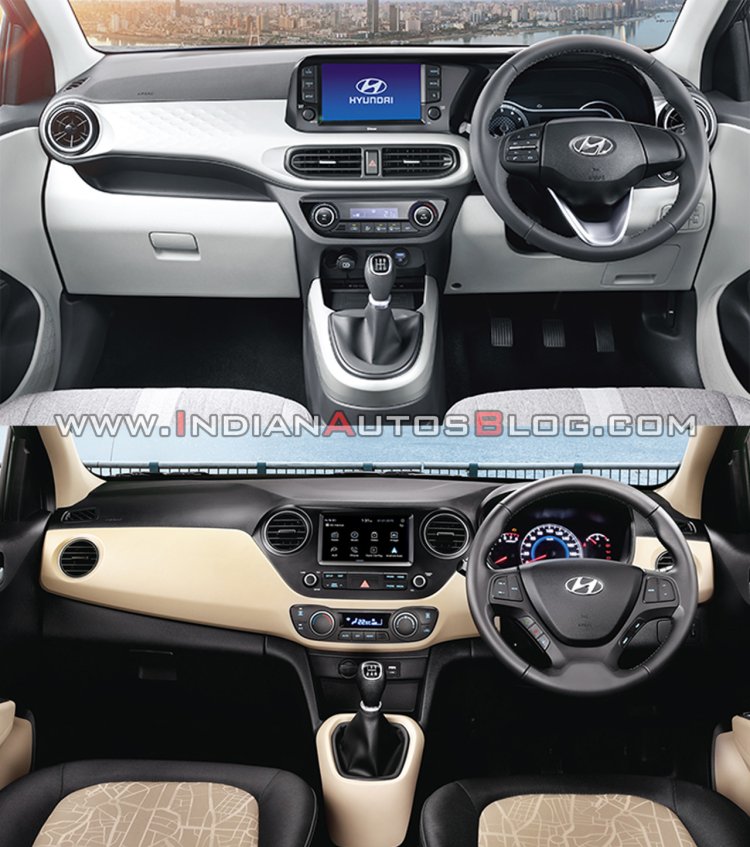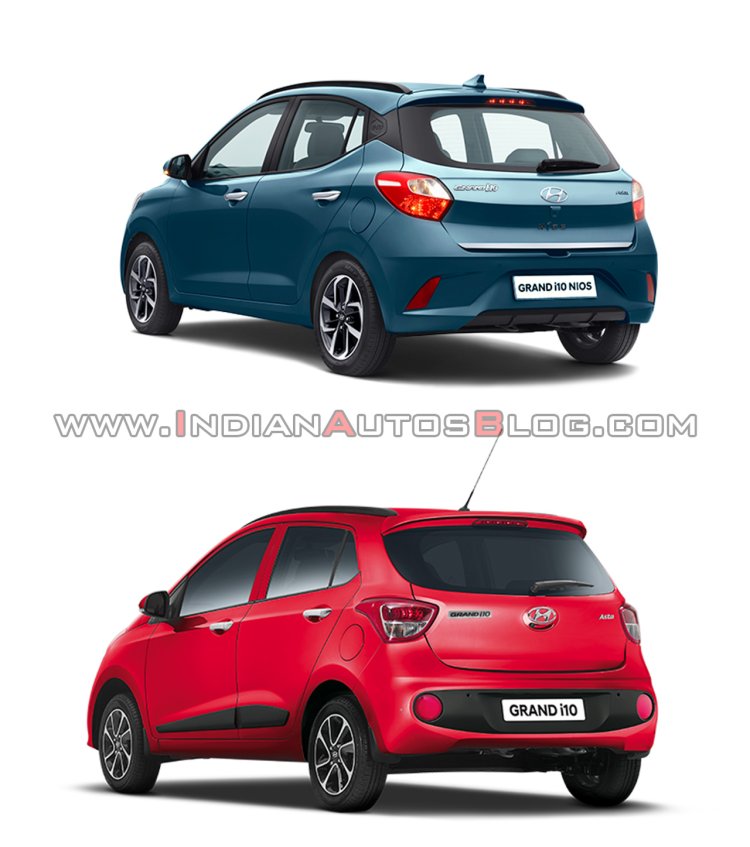The highly anticipated Hyundai Grand i10 Nios was launched in India on the 20th of this month. The Hyundai Grand i10 continues being sold alongside as a cheaper alternative. So how different is the third-gen model from the second-gen model? That's the question we answer to in this story.

Design
The Hyundai Grand i10 isn't much of a looker, but the Hyundai Grand i10 Nios does bring some serious competition in that aspect in the A-segment. While it may not be able to hide its roots, the exterior sure is much more stylish and expressive.
Be it the more sculpted bonnet, those more rounded and sleeker headlamps, the wider cascading grille flaunting boomerang-shaped LED DRL on its flanks, cleaner profile with no moulding strip, the curvier greenhouse because of the swifter kick in the beltline, the sportier bumpers, the 'G-i10' branding on the C-pillar, the faux rear skid, the edgier tailgate or the shark-fin antenna up top, there's exceptional attention-to-detail all around. Dual-tone colour options are also available, in which the ORVMs, A-pillar and roof come in black. It wouldn't be overselling to say that the third-gen car raises the bar in its segment.

Inside, too, the third-gen model with the 'Nios' suffix is a lot more contemporary. The steering wheel looks more compact and has been designed on the lines of the unit offered in bigger global models like the i30 and the Veloster. The instrument panel and the infotainment system have been clubbed to be housed in a single unit, and that seems to be inspired by that of the Hyundai Palisade. The wavy pattern on the dashboard is an interesting touch in a car of this segment. The usage of white colour for contrast breaks the monotonous trend of using beige and makes the cabin look much classier than that of its competitors. The turbine-style outer-end air vents and the rectangular central air vents are more stylish, and so is the shinier new climate control panel.
Coming on to the inside, the Grand i10 Nios features an all-new interior in comparison to the older car. The Nios get a new dashboard, steering wheel, new seats and new grey dual-tone upholstery. A freestanding display houses the infotainment system which is integrated into the housing of the instrument panel. On the other hand, older Grand i10's infotainment screen is embedded separately into the centre of the dashboard. The Nios gets a large 5.3-inch multi-information display (MID) inside the new instrument panel layout, it also gets the same 8-inch infotainment touchscreen display as the Venue. This touchscreen has grown larger in size compared to Grand i10’s 7-inch touchscreen infotainment system.
Features
Beginning with the exterior, unlike the Hyundai Grand i10, the Hyundai Grand i10 Nios features projector headlamps and projector fog lamps. The aforementioned shark fin antenna is another difference, and it's a first-in-segment feature. While the old model features 14-inch alloy wheels, the all-new sports 15-inch alloy wheels.
Inside, the third-gen model has plenty of attractive features, such as 5.3-inch digital speedometer and cluster with MID, wireless charging, 8-inch touchscreen infotainment system with Apple CarPlay and Android Auto, Arkamys premium sound system, USB charger and rear power outlet. Many of these are first-in-segment features.
On the safety front, most of the features are the same in both models, such as ABS with EBD, dual-front airbags, rear parking sensors, speed alert system, rear parking camera and driver and passenger front seat belt reminder. The Hyundai Grand i10 Nios additionally includes speed sensing auto door lock, emergency stop signal and headlamp escort function as well.
Specifications
The Hyundai Grand i10 Nios is 3,805 mm long, 1,680 mm wide and 1,520 mm tall. Compared to the Hyundai Grand i10, it is 40 mm longer and 20 mm wider. The height, on the other hand, is the same. The wheelbase of the all-new model measures 2,450 mm, and that translates to an improvement of 25 mm, thus more room inside the cabin. As for the fuel tank capacity, it's 43 litres in the old model and 37 litres in the all-new model. The boot space is 256 litres in the second-gen model and 260 litres in the third-gen model.
The Hyundai Grand i10 is available in three engine variants: BS-IV 1.2L petrol, BS-IV 1.2L petrol-CNG and BS-IV 1.2L diesel. The petrol engine produces 83 PS and 11.6 (113.76 Nm) of torque. The petrol-CNG engine develops 81.6 PS and 11.2 kg.m (109.83 Nm) of torque running on petrol and 66.3 PS and 9.99 kg.m (97.97 Nm) of torque running on CNG. The diesel engine's maximum power and maximum torque outputs are 75 PS and 19.4 kg.m (190.25 Nm) respectively.

The petrol engine can be had with a 5-speed MT or a 4-speed AT, while the petrol-CNG and diesel engines come with the former as standard. The fuel economy ratings of these are 19.77 km/l (MT)/17.49 km/l (AT), 18.9 km/kg and 24.95 km/l respectively.
The Hyundai Grand i10 Nios is sold with the BS-VI version of the Hyundai Grand i10's petrol engine and its BS-IV diesel engine. Both can be had with a 5-speed MT or a 5-speed AMT. The fuel economy ratings are 20.7 km/l (petrol-MT), 20.5 km/l (petrol-MT), 26.2 km/l (diesel-MT) and 26.2 km/l (diesel-AMT).
Also Read: Old Hyundai Grand i10 to lose petrol-CNG & diesel engine options
The Hyundai Grand i10 is priced from INR 4.98-7.59 lakh (ex-showroom Delhi). The Hyundai Grand i10 Nios is just a tad costlier, with prices ranging from INR 5.00-7.99 lakh (ex-showroom India). The standard price includes 3 years/1,00,000 km warranty and 3 years road side assistance in the Hyundai Grand i10. In the Hyundai Grand i10 Nios' case, customers can select from three options: 3 years/1,00,000 km, 4 years/50,000 km and 5 years/40,000 km.
*Ex-showroom, India





















